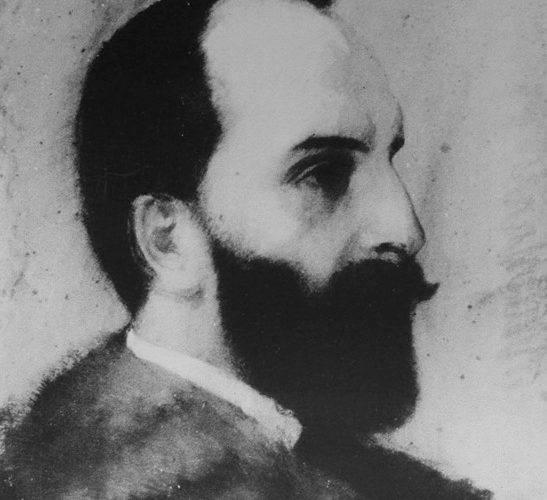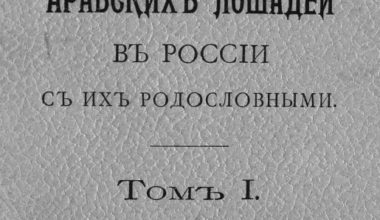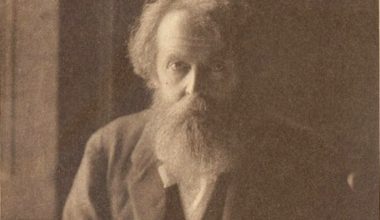Edited by Edouard Al-Dahdah. Transcribed and translated by Margaret Lolley. Editor’s note by Lyman Doyle. Unpublished. British Library.
Editors Note
This is the first letter in a series of correspondence between the Blunt’s and Roman Sanguszko Jr. concerning the effort to establish a stud book for Arabian horses in Russia.
Lady Anne wrote in her journal on 10 November after receiving this letter: “My letter from Prince Sanguszko was an account of the death of poor Bint Azz from a broken leg. She was turned out it appears, anyhow she jumped a ditch, and broke the leg and died leaving no produce. He also told me he has bought an old horse called Mes’ad that was the one sent from the Hejaz to Ali Pasha Sherif (who never bred from him, not being I suppose certain of his origin) and the horse was sold for 11 pounds at the first A.P.S. auction. Prince S. says his produce are good. As the Prince asked for W’s views on the new Russian Stud Book project, I left the letter with W. to answer.”
Transcription
Slawuta, le 23 Octobre
(4 Novembre) 1899
Chère Lady Blunt,
Je suis vraiment honteux de ne vous avoir pas encore remerciée pour la photographie de la jûment Kasida, que vous avez eû la bonté de m’envoyer l’été dernier – l’arrière-petite-fille de la belle jûment que j’avais achêtée il y a deux ans. Malheureusement, elle ne vît plus – grâce à un manque de soins dans le Haras, elle est tombée en sautant un fossé, s’est cassé la jambe et a été achevée – j’ai été bien fâché en l’apprenant, d’autant plus qu’elle ne m’a rien laissé comme produit. J’avais achêté en même temps un vieil étalon, également de l’écurie d’Ali Pascha – Chérif- Massad; et après lui, j’ai plusieurs poulains fort beaux.
Vous avez raison de dire que nos idées sur le cheval Arabe sont maintenant patronnées par les autorités les plus haut placées. Il est question d’établir un stood-book pour les chevaux Arabes en Russie: c’est le Prince Scherbatof qui – par ordre du Grand Duc Dmitri Constantinovitch, chef des Haras Impériaux – se charge d’exécuter cette innovation qui me semble très-désirable. L’administration Centrale des Haras m’a envoyé un ouvrage du Prince Scherbatof sur ce sujêt, en me demandant mon avis.
Le Grand Duc m’a fait exprimer sa satisfaction sur l’opinion que j’ai émise relativement à ce projêt : j’ai pensé qu’il faudrait inscrire dans ce Stoodbook tout cheval Arabe de sang noble se trouvant en Russie – et dans les haras, tous les chevaux ayant au moins 66% de pur sang Arabe, prouvé par des preuves écrites bona fide. On devrait continuer en se tenant à cette règle.
Je serais très-reconnaissante à Mr. Blunt s’il voulait me faire connaitre son sentiment sur ce sujet, surtout sur l’utilisation d’un Stoodbook.
Veuillez, chère Lady Blunt, croire à tout mon respectueux dévouement.
Roman Sanguszko
The use of the circumflex accent ( ^ ) in 19th century French differed from its usage today, notably in its use over the letter u and e in this letter.
Double s – the author of this letter forms the first in a series of two letter s’s differently – it resembles an f. Denoting a double s in this way was common up until the Industrial Revolution.
Translation
Slavuta, 23 October
(4 November) 1899
Dear Lady Blunt,
I am really ashamed for not yet thanking you for the photograph of the mare Kasida, that you kindly sent me last summer – the great-granddaughter of the beautiful mare that I bought two years ago. Unfortunately, she’s no longer alive – thanks to poor upkeep at my stud, she fell jumping over a ditch, broke her leg and had to be put down — I was angry upon learning this, even more so since she left me no product. I had bought an old stallion at the same time, also from the stables of Ali Pasha Sherif – Massad; and according to him, I have several very beautiful colts.
You are correct in saying that our ideas about Arab horses are now owned by the highest-placed authorities. It is a matter of establishing a studbook for Arab horses in Russia: it is Prince Scherbatof who, by order of the Grand Duke Dmitri Constantinovitch, head of the Imperial Stud Farm, is handling this innovation, which seems to me very desirable. The Central Administration of the Stud Farm sent me a publication by Prince Scherbatof on the subject, asking me my opinion of it.
The Grand Duke communicated his satisfaction with the opinion I shared on this project: I thought that it was necessary to register every Arab horse in Russia with noble blood in the studbook – and in the Stud farm, every horse having at least 66% pure Arab blood, documented with written bona fide proof. We should continue following this rule.
I would be very grateful to Mr. Blunt if he wanted to share his feelings on this matter, most of all on the use of a Stud book.
Please accept, dear Lady Blunt, my respectful devotion.
Roman Sanguszko


